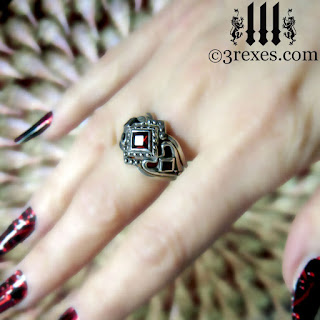Medieval Wedding Traditions: Beauty Throughout the Ages
There is such a romantic feeling that was born in the enchanting era known as the Middle Ages. Imagine organ music resonating through the picturesque archways of a great stone cathedral, the smell of flowers wafting through the open courtyard, and the undeniable beauty of a quaint English countryside. From so very young, most of us dream of our fairy-tale wedding, the romance of your prince dropping to one knee, how your hand tremors as he places the engagement ring on your awaiting finger and the enchanted day when your King makes you his Queen.
Weddings during medieval times has given birth to many traditions that today's brides still follow. Betrothal was an important medieval tradition. The prospective bride and groom appeared in front of a priest and made solemn promises. They then exchanged rings and kisses, then waited for roughly 40 days, when the wedding ceremony then took place. Grooms were required to pay a "deposit" at the betrothal, and should he try to back out of an agreement, he would have to pay a penalty. This was equal to four times the betrothal price.
Medieval brides often wore blue, the traditional color of purity, rather than today's white dress. The traditional Maid of Honor began in England where the senior of the bridesmaids attended to the bride's every need the week or so before the wedding day. The Maid of Honor was an important part of the wedding plans. Not only was the she entrusted with creating the bouquet and other wedding decorations, but on the wedding day the Maid of Honor would help the bride dress.
During the feast, the bride and groom drank spiced wine from a fine chalice called the Wedding Cup. As midnight approached, guests tried to get into the newlywed's bedchamber to bring them a reinvigorating potion called "Bride's Broth".
Knights returning from the Crusades introduced medieval society to the tradition of a bridal veil. The veil was another symbol of purity and was also believed to protect the bride from "the evil eye." Garters became an important part of a medieval bride's wardrobe. As the couple hurried to their room, wedding guests followed and tried to grab the garter for good luck. Before this tradition, overzealous wedding guests often shredded the bride's clothing trying to grab a handful of lucky cloth. Tradition held that any man who gave his love a bride's garter would be guaranteed faithfulness.
Flowers were also important in a medieval wedding. Returning crusaders introduced medieval Europe to a Saracen tradition of weaving a crown out of orange blossoms. Only nobles could afford these very expensive blossoms. credit to: (medieval-castles.net)
Few images equal the wonder of a fairy-tale wedding in a medieval castle. A princess wearing her finest blue garments…a noble knight in his shiniest armor…the lord and his lady presiding from a table of honor…and the entire village attending to witness the glorious event. Medieval weddings in castles included these scenes, but they were much more complex. Marriage in the Middle Ages meant sharing a lord's property or a noble name.
Marriages may have taken place elsewhere, such as a church or in a peaceful garden, but the wedding party would return to the castle to feast and celebrate for hours-even days.
Such wonderful images of the Middle Ages can be captured today. Our beautifully crafted Gothic designs form dainty promise rings, engagement crowns; to our regal silver wedding bands for Kings and Queens, we can help your embrace the uniqueness that only you two can share.
3 Rexes Website Here!
 |
| Brandy Wine Ring Medieval Wedding Crown with Yellow Citrine Stone |
3 Rexes Website Here!


